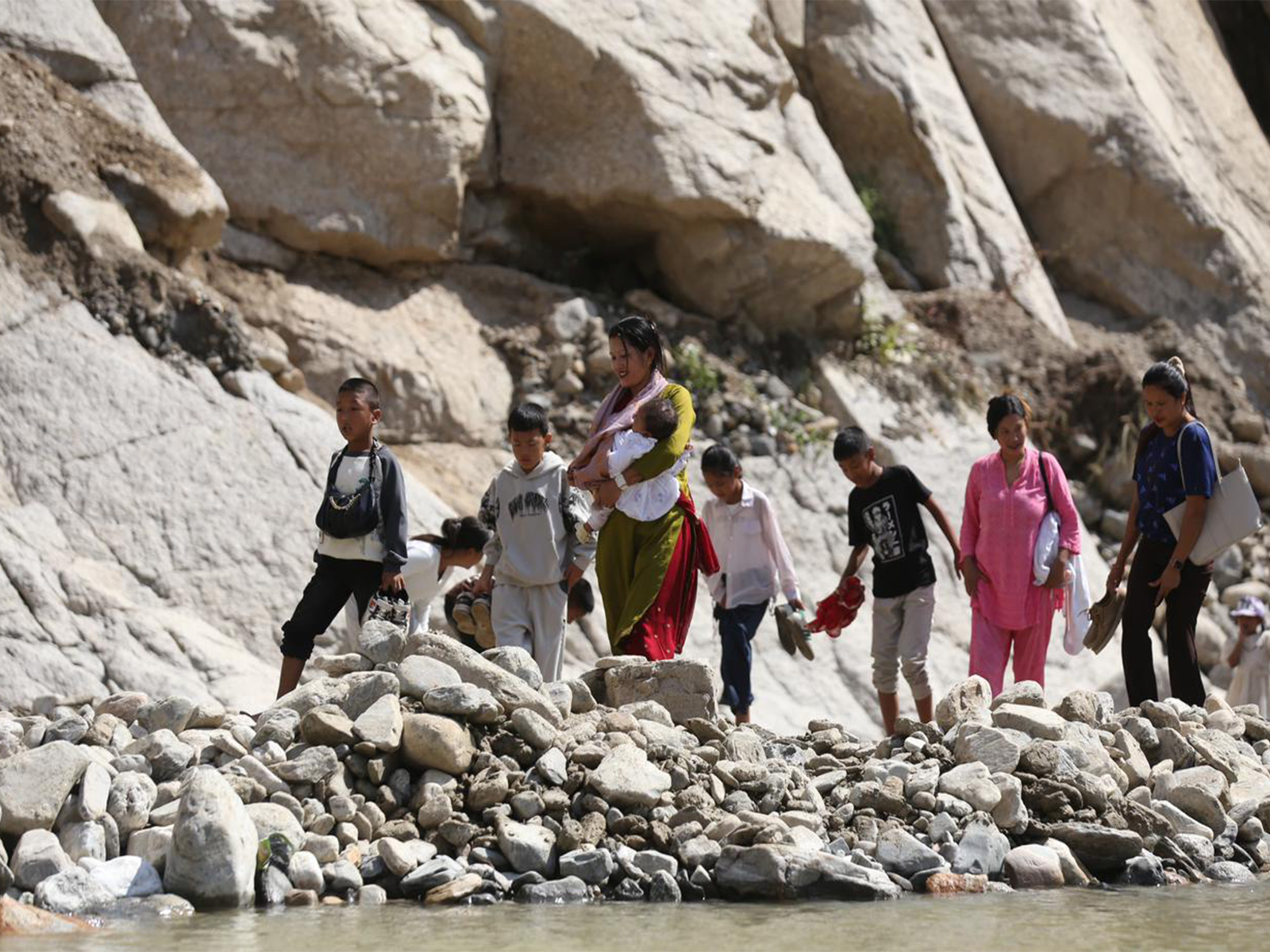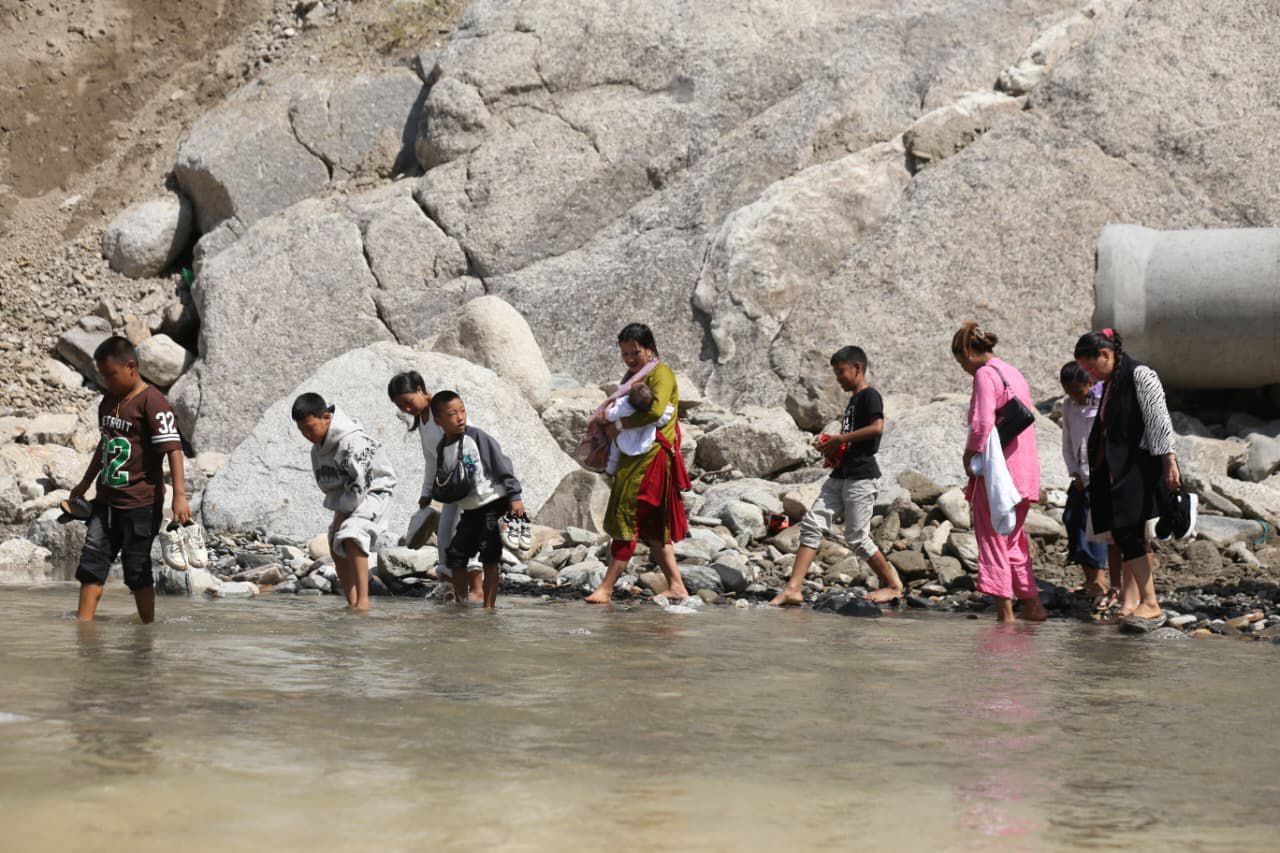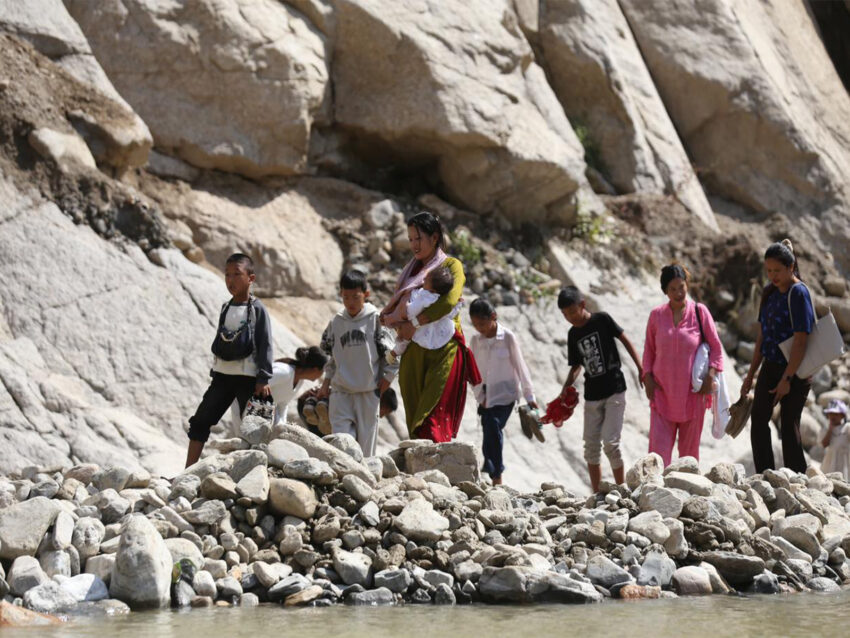
Kavrepalanchok [Nepal], October 9 (ANI): One week after the heavy downpour, major highways of Nepal are out of order, forcing people to take long-distance walks and leaving them stuck in village areas. 
Sabita Lama, along with her children and siblings, crossed a section of the BP Highway in Chaukidanda, wading through the Roshi River, which, till last Friday, was a diversion road.
“Last week, I had travelled through this road and it was good, it was before Dashain. Now I have faced difficulties to get across it. Ever since last week’s heavy rainfall, I was stuck in my village. Movement across has been very difficult,” Lama told ANI after getting across the river.
Various sections of the BP Highway, built with Japanese assistance, were swept away by the floods of 2024, which, within weeks of the disaster, were brought into operation by setting up diversions. The local authorities, in coordination with the central government, are again setting up diversions, but people were forced to cling to rocks to get across the road section and catch a bus to continue their journey.
Those on bikes and two-wheelers also have to risk their lives and enter the river to get across, which is not an easy task. People who walked longer distances are now left with no other option than to take off their shoes and wade through the water, which still has a strong current.
One week since the heavy rain battered the Himalayan nation, at least nine major highways connecting various parts of the country remain completely obstructed, as per the latest update of Nepal Police.
As a result, many who had left Kathmandu Valley for their village homes for the Dashain festival have been facing difficulties in returning to their workplaces and temporary residences.
“On my way up to here from my home (Kharpachowk), the condition of roads is almost similar as here (Chaukidanda); two to three sections have been badly damaged. The locals themselves have been working to make roads suitable for movement. The road that I left behind is very difficult to travel,” Lama added.
As per the vehicle operators as well, due to the road blockages, especially in the eastern part of Nepal, vehicles that left the valley have not returned on time. Though the authorities have asked vehicles to use alternative routes, the absence of proper infrastructure has been hitting them hard.
“Before the section of road was washed by the river, an average of four to five hundred vehicles used to pass through here. On the very day of the disaster, about one hundred vehicles had got through this section,” Shiva Prasad Neupane, a resident of Kavrepalanchok district along the BP Highway, told ANI.
The World Bank’s recent Nepal Development Update noted that severe floods and landslides from September 26 to 28 last year, caused by unusually intense monsoon activity intensified by climate change, resulted in damage amounting to 0.8 per cent of the GDP. The total damage is estimated at Rs 46.7 billion, affecting infrastructure, agriculture, and social sectors.
As the Roshi River flows further down to the southern plains, it has unleashed further terror. The devastating floods and landslides had swept away around a 10-kilometre-long road from Bhakundebesi in Kavre to Nepalthok of Sindhuli on September 27-28. The road was washed away in some places and was severely damaged in others.
The Kavre section of the BP Highway was badly damaged in Mamtikhola, Kaldhunga, Boksikuna, Narkepul, Pinathalibesi, Dalabesi, Bhyakurekhola, and Mangaltar, among other places. The roads were swept away in these areas.
In the year 2025, the heavy downpour of three days starting October 3 has now swept away the diversion constructed last year to resume transportation along the highway.
“People now have to take difficult routes to get through the section. With proper functioning of the road (creating diversion), the situation would further ease. Even the alternative routes don’t have bridges and other infrastructure, and people are not able to pass through the road section,” Neupane, also a principal at a local school, added.
The BP Highway, built with Japanese assistance, started on foot in 1995 and was completed in 2015 at a cost of NRs 21.5 billion. The single-lane 160 km highway links Banepa of Kavre to Bardibas of Mahottari through Sindhuli. The highway is the shortest route connecting eastern Tarai and hills with the capital, Kathmandu. (ANI)


